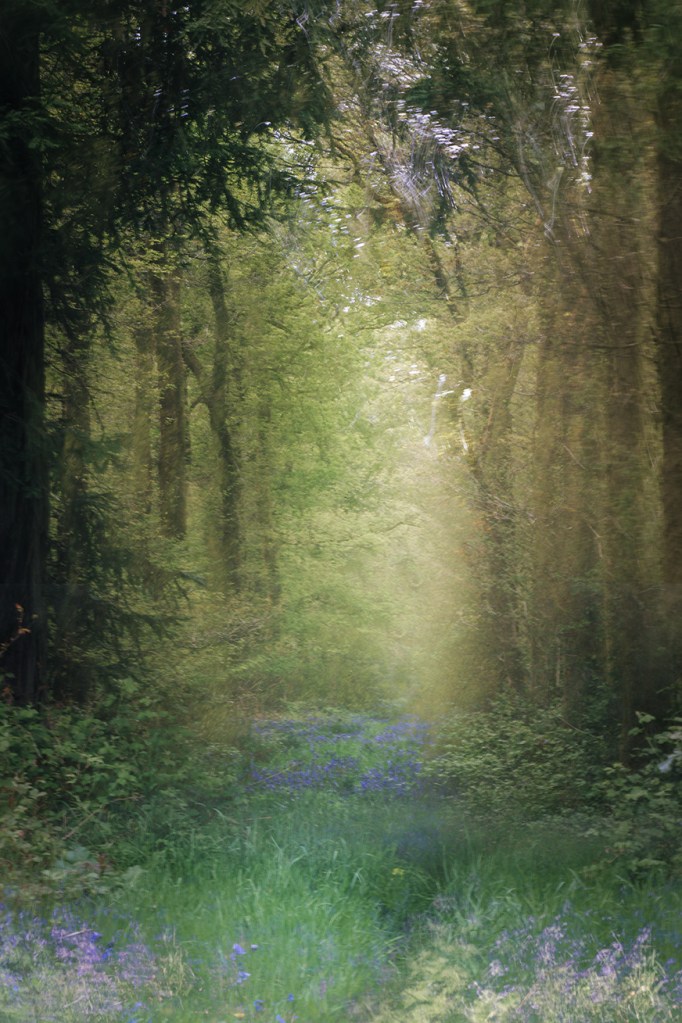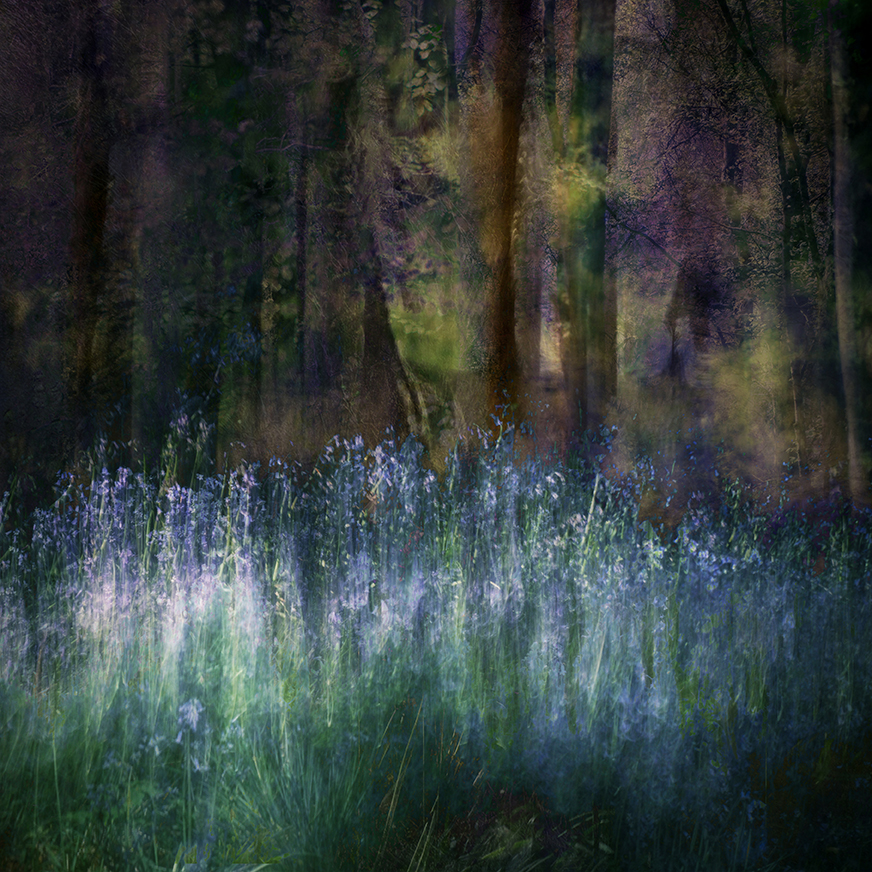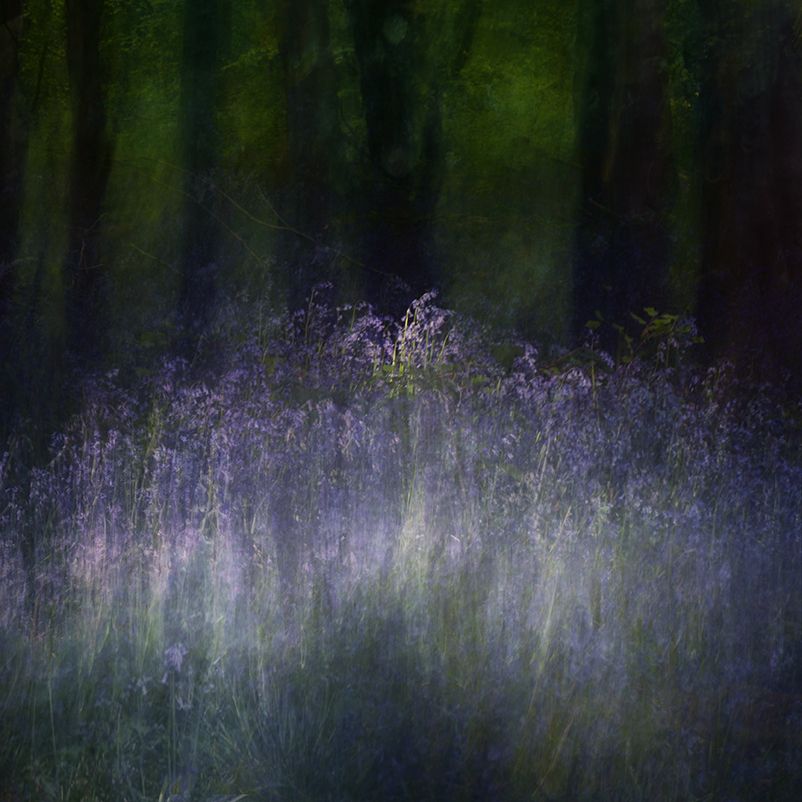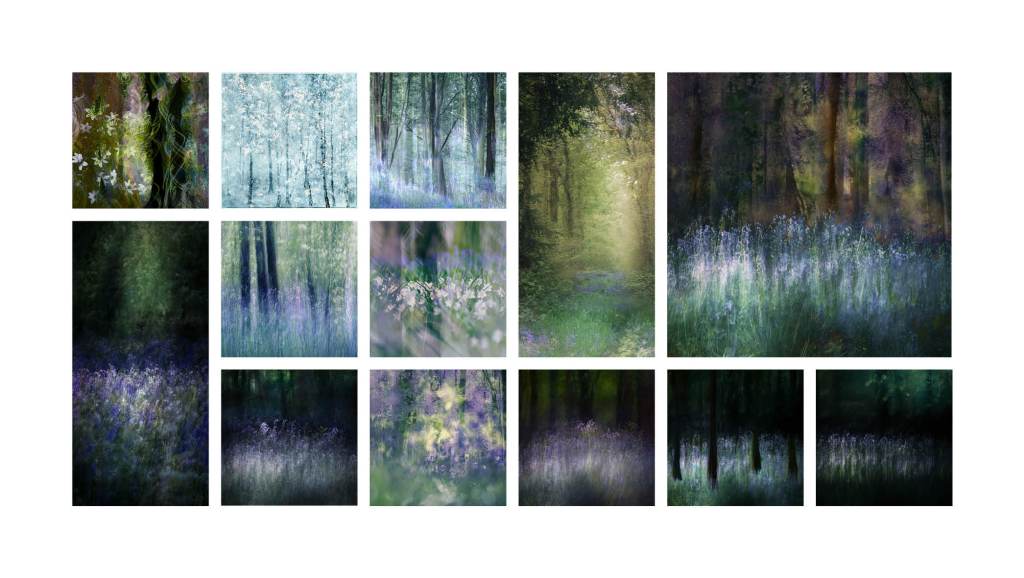I haven’t written anything for a long time so I thought I would write a quick ost about photographing the spring woods with intentional camera movement (ICM) and multiple expoures. I’m probably sharing this post a little late i the season, but hopefully’ll see another week of bluebells in the woods and hopefully any tips will be useful for other intimate landscape work or next year.

Spring is my favourite time of the year and being in the woods when the bluebells, anemones and stitchwort transform the woodland floor to a riot of colour buzzing with pollinators is heaven. I live in a little village surrounded by woodland and am luky to be able to visit the woods every day which has given me a lot of time to experiment with woodland photography in spring, and also, more importantly, to soak up the atmosphere and enjoy the health benefits of being in the woods as they return to life.
When I go to the woods I usually only take a macro lens with me, so any landscape images I take will be intimate shots and I don’t carry a tripod. The images I return with will be intimate landscapes, portraits of flowers and ICM work. Any multiple exposure work I create is composited when I return home as I don’t have a camera that will do this for me.
Whilst I dream of waking before the dawn and venturing into mist filled woods as the sun rises, I’m usually not up and about so much of my work is created in the middle of the day, or in the late afternoon and early evening after work. But as the leaves burst in the canopy overhead the dappled light in the woods is softened and woodland photography can still be rewarding.

Bluebells lend themselves to ICM photography, which I have discussed in previous posts, and many of us will have images in our collections of vertical pans emphasising the tree trunks and flowers, I am no exception. To soften these images like to wiggle the camera a little as I pan, or hld it still for a moment, focusing in on a flower or leaf to try and capture elements in focus within the motion. AlthoghI do own a ND filter I rarely fit it to the camera and I take most images quickly at around 1/10 – 1/5 sec. Lately, as in the image in the first paragraph, I have been experimenting with very subtle rolling motions, pushing the camera gently in a circular movement away fom me, in an attempt to capture the scene ad the light in an impressionist way. Very subtly adjusting the focus during a shot can also create delicate blurring that can give a dreamy quality to the image.

When composing an image, I will often look for pools of light, strong contrasts in the landscape that will lend themselves to panning, or dark scenes with small areas of light, as you can “draw” with these as you move the camera. I’m drawn to the woods in the late afternoon as the shadows and last pols of light on the bluebells are perfect for isolating them from the darkess of the trees and capturing images like the one below. When I began ICM photography, many years ago, I would use a lot of large sweeping movements, which I imagine would suit seascapes and wide open landscapes better, I am learning that small sublte and delicate movements create images that convey my communion with the woodland.

My post processing will usually involve the removal of hundreds of dust spots (I do use a very old camera) and then I like to play. I will usually work out the colour and tonal adjustments I wish to make in Lightroom and then create a preset, this way if I wish to combine images later I can do so and they will harmonise. Playing with the contrast and shadows will exaggerate the scene and separate the lights and darks drawing light patches of flowers or pools of light out. I often reduce the yellow in an image, favouring cooler blue tones, and play with split-toning and with the colour grading. Compositing, when I do it, is done in Photoshop, using the layer blending tools as a starting point, but this could also be done in opensource software.
I hope you may have found something useful in the words above, ad more importantly wish you may happy wanders through our beautiful woodlands. As ever be mindful to enjoy the countryside and photography without damaging our delicate woodland flora and please stick to the paths.

Most of these images are available to purchase as prints and cards via the shop tab above.
*Disclaimer – I have dyslexia, apologies for my spelling mistakes.

These are absolutely gorgeous. Thank you for sharing!
LikeLiked by 1 person
Thank you, Andrea
LikeLike
Lovely images!
LikeLiked by 1 person
Thank you
LikeLiked by 1 person
Thank you for sharing these Jo, you have developed a wonderful style, the images are very beautiful!
LikeLiked by 1 person
Thank you
LikeLiked by 1 person
Like all your images these are a joy to view.
LikeLike
Thanks, Dale
LikeLike
I love your work. Thank you.
LikeLiked by 1 person
Thank you 🙂
LikeLiked by 1 person
Always grateful for your thoughts, images and time.
LikeLiked by 1 person
Thanks, Joanne, it’s a pleasure to share them.
LikeLike
It is so good to look at your images. They are calming, beautiful, and I so much enjoy them. Thank you for taking the time to write this. I am always curious about your techniques. Wonderful work. Thank you.
LikeLiked by 1 person
Thanks so much
LikeLike
Thanks Jo! I love your work and appreciate you sharing your images and thoughts very much. Glad you get so much enjoyment from your walks in the woods! Keep taking and sharing! Take care Carol
Get Outlook for Android ________________________________
LikeLiked by 1 person
Thank you, Carol
LikeLike
A very special photographic style, I love it !
LikeLiked by 1 person
Thanks so much, Marc.
LikeLike
Beautiful images. Thank you so much for sharing.
LikeLike
Hey Jo,
found your profile on Instagram and wow I am super impressed. This is a wonderful and unique style. Can I ask you how you overlay these images in photoshop? I understand if it is too complicate to explain but any tips would be greatly appreciated 🙂 I would like to try this by myself.
Thank you very much.
Best,
Thomas
LikeLike